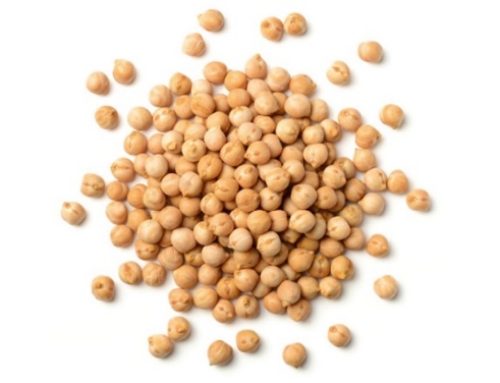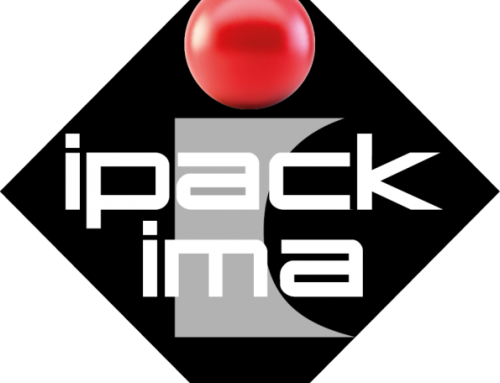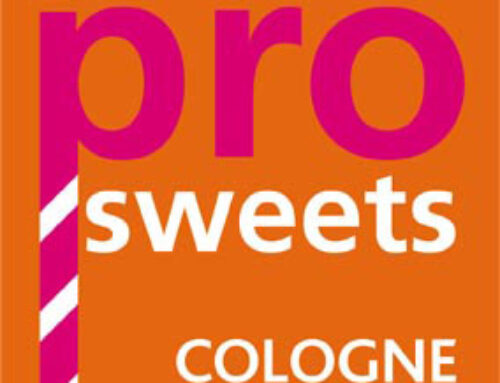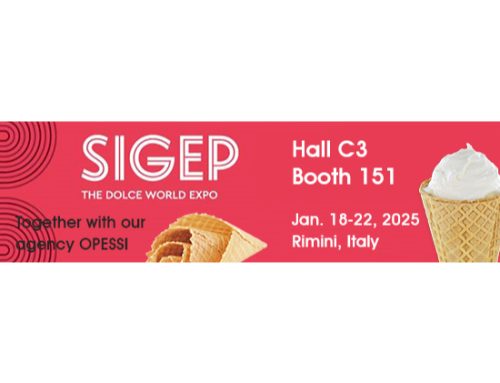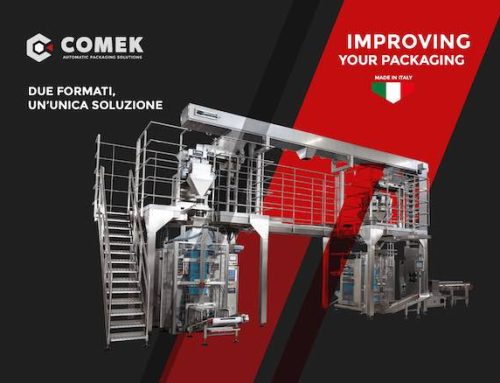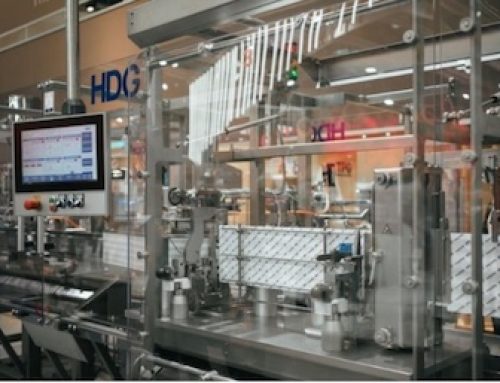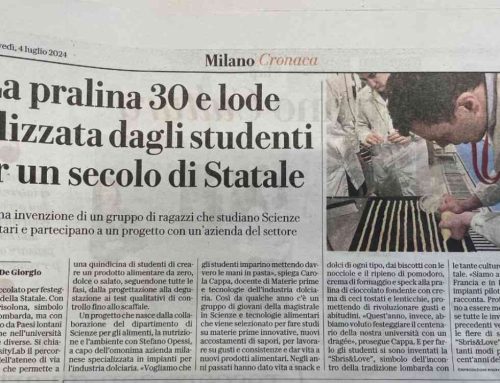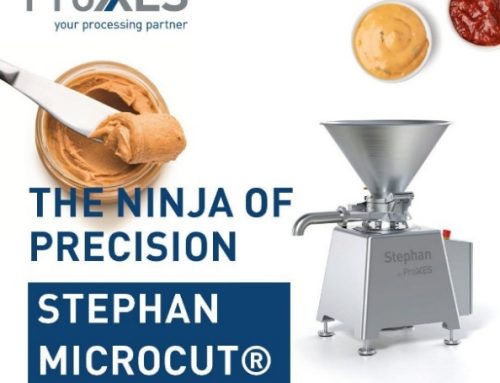Tesi di Laurea Magistrale
“Tecnologia di sviluppo di una crema a base grassa per applicazione nei prodotti da forno”

“Next generation” è da qualche tempo uno dei focus per iniziative pubbliche e private. In Opessi crediamo da sempre nell’importanza di investire nei giovani, sia nella fase di reclutamento e formazione dei nostri collaboratori, sia nel favorire, attraverso il progetto “Opessi UniversityLab” lo sviluppo di sinergie tra mondo accademico (Dipartimento di Scienze per gli Alimenti, la Nutrizione e l’Ambiente –DeFENS- dell’Università degli Studi di Milano) e industria, alimentato da esperienze e conoscenze sul campo.
Abbiamo quindi accolto con piacere la proposta della dott.ssa Cappa, docente di Scienze e Tecnologie Alimentari del DeFENS, di partecipare, in qualità di correlatori, all’elaborazione della tesi di Francesca Rinaldi, neo laureata magistrale in Scienze e Tecnologie Alimentari presso l’Università degli Studi di Milano.
Il progetto di tesi nasce dal lavoro svolto nell’ambito dell’iniziativa UniversityLab, cui Francesca ha preso parte e ha per oggetto lo studio della ricetta e della tecnologia di sviluppo di una crema a base grassa per applicazione nei prodotti da forno. Sono stati approfonditi gli ingredienti che compongono una ricetta base, con riferimento all’effetto di ciascuno nel determinare la struttura finale della crema.
Il caso di studio è una crema al caffè, utilizzata come ripieno in un biscotto sviluppato ad hoc, sulla quale sono state condotte prove preliminari sia a livello domestico che presso i laboratori del DeFENS, utilizzando formulazioni a diverso contenuto di grasso e umidità.
A causa delle limitazioni imposte dalla pandemia non è stato poi possibile eseguire i previsti test industriali in presenza presso il Gruppo HDM (tecnologie Five-Roll Refiner, Ball Mill e Refiner-Conche) ma il processo di produzione è comunque stato sviluppato, anche grazie alla collaborazione di HDM che ha messo a disposizione il proprio know-how.
Nello svolgimento della tesi Francesca è stata guidata dalla dott.ssa Carola Cappa, sua relatrice e, in qualità di correlatori, dai nostri tecnologi, dott. Stefano Opessi e dott.ssa Alessandra Perolari: per chi desiderasse approfondire, riportiamo, di seguito, l’abstract del lavoro.
Le nostre attività in ambito universitario non si fermano qui: a breve i nuovi seminari per gli studenti del corso di “Materie prime e tecnologie per l’industria dolciaria” della Prof.ssa Ernestina Casiraghi e della Dott.ssa Carola Cappa, per il corso di Laurea Magistrale in Scienze e Tecnologie Alimentari, e la chiusura dei lavori della seconda edizione di UniversityLab.
Consulta la nostra sezione dedicata alla formazione e contattaci per ogni informazione.
ABSTRACT
This thesis investigates the literature data regarding ingredients and equipment used to develop a fat-based cream for bakery application. Therefore, the ingredients that make up a basic cream recipe have been discussed, referring to the role that each of them has in determining the final structure of the cream. Indeed, creams are a complex multi-phase system of solid particles dispersed in a continuous fat phase, in which each of the ingredients, carefully chosen among the available alternatives, contributes to achieving a structure that responds to the expected performance of the product. In the same way, the manufacturing process has been outlined, since the production parameters or even the equipment may vary, according to the characteristics required by the product. Not only, but the same formulation can give significantly different results depending on the production process implemented too. Furthermore, a tiramisu-like flavoured filling has been taken as an example and three tests (C1, C2 and C3), involving the use of formulations with different fat and moisture content and different domestic tools, have been conducted. Due to the pandemic restriction, these preliminary trials have been conducted at home, rather than at industrial level, and the three creams were characterized only in terms of particle size, colour, water activity and stability at room temperature. The three creams were significantly (P < 0.05) different; noticeably, in comparison with the other two creams, C3 better satisfies the characteristics desired: it was the darkest and it has the lowest particle size and water activity. Although the result of C3 has been acceptable (mainly in term of moisture and fat content and cream stability), it has not fully satisfied the sensory requirements, especially in terms of proper mouthfeel due to the presence of particle size larger than 50-100 µm (value considered adequate for cream filling according to literature data). In fact, even C3 would have benefited from a pre-refining phase, in addition to a proper selection of ingredients that together allow to obtain a better result in terms of flavour release and texture.
According to the initial plan, tests should have been carried out at industrial level with the different technologies available (Five-Roll Refiner, Ball Mill and Refiner-Conche) on the tiramisu-like filling recipe that gave the best results. Furthermore, the creams produced at industrial level should have been analysed (e.g., for moisture, colour, viscosity, texture, stability, etc.) in order to evaluate any differences among technologies applied. However, this was not possible due to pandemic limitation. Thus, the product industrialization phase was just supposed by discussing the recipe and technologies strategies with food companies involved in the Opessi UniversityLab project whom this thesis work is connected to. The Opessi UniversityLab project is a collaboration between the University of Milan and manufacturing business, in the name of Opessi S.r.l, where students’ ideas of new products are selected, better described and developed at industrial level. In terms of ingredients, the recipe developed in the present study seems in line with its use, managing to mediate between the requirements of industrial convenience and the appeal of familiarity and local tradition (thanks to the use of butter), which is the key to the product in which the filling is to be placed. However, according to company’s communication, a reduction in fat content is desired in order to achieve correct interaction between ingredients and a more pleasant product. Furthermore, a better characterisation of the coffee flavour can be achieved by choosing alternatives to soluble coffee used that better release the required aroma in the product and has smaller particle size. On the other hand, from the production point of view, suitable production machinery seems to be essential for satisfactory results. With regard to production technology instead, while it was clear from the tests that suitable machinery is essential to obtain a satisfactory product, it was not possible to define which is best suited to the purpose. Indeed, creams do not require an extremely narrow particle size distribution curve, especially when deposited on a biscuit that has several inclusions, as in this case. This overrides the main differences between the various production systems under consideration and allows to delegate the choice of equipment to other factors (e.g., related to economy and productivity).
A future development of the thesis could be to carry out the trials at industrial level and to characterise the technological properties of the creams made by the different machines in order to fill the lack of information in the literature on this point.

